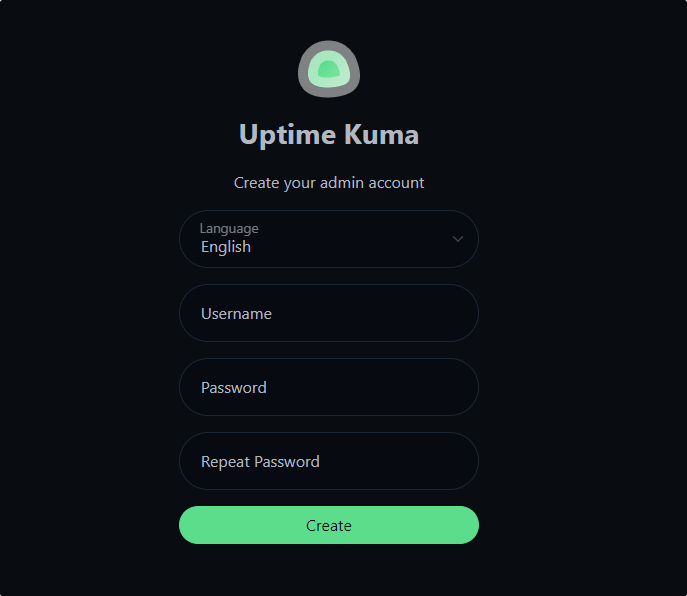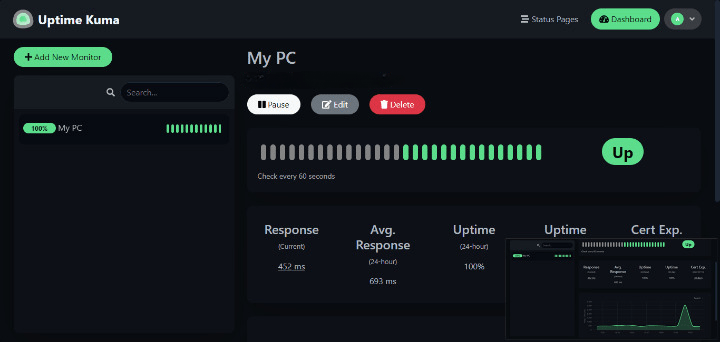How To Install Uptime Kuma on Ubuntu 22.04 LTS

In this tutorial, we will show you how to install Uptime Kuma on Ubuntu 22.04 LTS. For those of you who didn’t know, Uptime Kuma is an open-source, modern service mesh platform that makes it easier to manage and secure microservices. It offers features such as traffic management, service discovery, rate limiting, and access control, among others
This article assumes you have at least basic knowledge of Linux, know how to use the shell, and most importantly, you host your site on your own VPS. The installation is quite simple and assumes you are running in the root account, if not you may need to add ‘sudo‘ to the commands to get root privileges. I will show you the step-by-step installation of the Uptime Kuma self-hosted monitoring tool on Ubuntu 22.04 (Jammy Jellyfish). You can follow the same instructions for Ubuntu 22.04 and any other Debian-based distribution like Linux Mint, Elementary OS, Pop!_OS, and more as well.
Prerequisites
- A server running one of the following operating systems: Ubuntu 22.04, 20.04, and any other Debian-based distribution like Linux Mint.
- It’s recommended that you use a fresh OS install to prevent any potential issues.
- An active internet connection. You’ll need an internet connection to download the necessary packages and dependencies for Uptime Kuma.
- SSH access to the server (or just open Terminal if you’re on a desktop).
- A
non-root sudo useror access to theroot user. We recommend acting as anon-root sudo user, however, as you can harm your system if you’re not careful when acting as the root.
Install Uptime Kuma on Ubuntu 22.04 LTS Jammy Jellyfish
Step 1. First, make sure that all your system packages are up-to-date by running the following apt commands in the terminal.
sudo apt update sudo apt upgrade sudo apt install wget apt-transport-https gnupg2 software-properties-common
Step 2. Installing Node.js.
- Install Node.js from NodeSource Repository.
By default, Node.js is not available on Ubuntu 22.04 base repository. Now run the following command below to add the NodeSource repository to your Ubuntu system:
wget -qO- https://deb.nodesource.com/setup_16.x | sudo -E bash
After adding the NodeSource repository to your system, install the Node.js using the Apt package manager:
sudo apt install nodejs
- Install Node.js using NVM.
Now use the bash script to install NVM on your Ubuntu system:
wget -qO- https://raw.githubusercontent.com/nvm-sh/nvm/v0.39.1/install.sh | bash
Next, close and reopen your terminal or run the following command to load the nvm to your current session:
source $HOME/.bashrc
Using NVM, you can check which versions of Node.js are currently available:
nvm install --lts nvm install node
Confirm the latest LTS version has been installed and run the command:
node -v
Additionally, you can check the version of NPM using the following command below:
npm -v
For additional resources on installing Node.js, read the post below:
Step 3. Installing Uptime Kuma on Ubuntu 22.04.
By default, Uptime Kuma is not available on Ubuntu 22.04 base repository. Now run the following command below to clone Uptime Kuma from the GitHub page to your Ubuntu system:
git clone https://github.com/louislam/uptime-kuma.git
Next, the Kuma directory and run its installation setup using the NPM package manager of Node.js:
npm run setup
Step 4. Installing Process Manager (PM2).
PM2 is a production process manager for Node.js applications that includes a built-in load balancer. Now run the command below to install PM2 on your Ubuntu system:
sudo npm install pm2 -g && pm2 install pm2-logrotate
After pm2 is installed, we can run our Uptime Kuma with this command:
pm2 start server/server.js --name uptime-kuma
Finally, let’s create a service file for PM2 so that it can start automatically Kuma with our system boot:
pm2 startup
Step 5. Configure Firewall.
Ubuntu 22.04 has ufw a firewall running by default. Enable connection through ports 3001:
sudo ufw allow 3001 sudo ufw enable sudo ufw status
Step 6. Accessing Uptime Kuma Web Interface.
Once successfully installed, open your web browser and access the Uptime Kuma Web UI using the URL https://your-IP-address:3001. You will be redirected to the following page:

After that, you will be redirected to the dashboard:

Congratulations! You have successfully installed Uptime Kuma. Thanks for using this tutorial for installing the Uptime Kuma monitoring tool on Ubuntu 22.04 LTS Jammy Jellyfish system. For additional help or useful information, we recommend you check the official Uptime Kuma website.